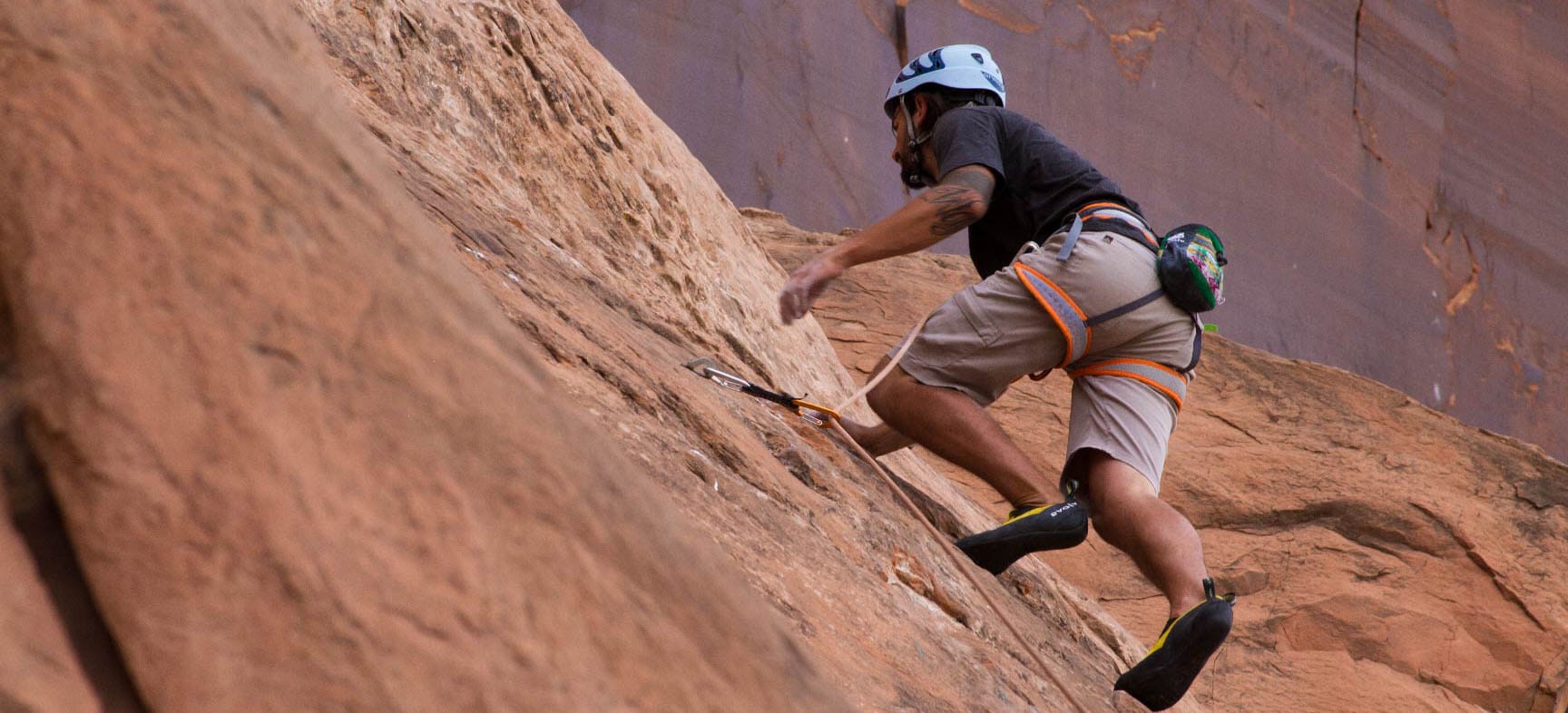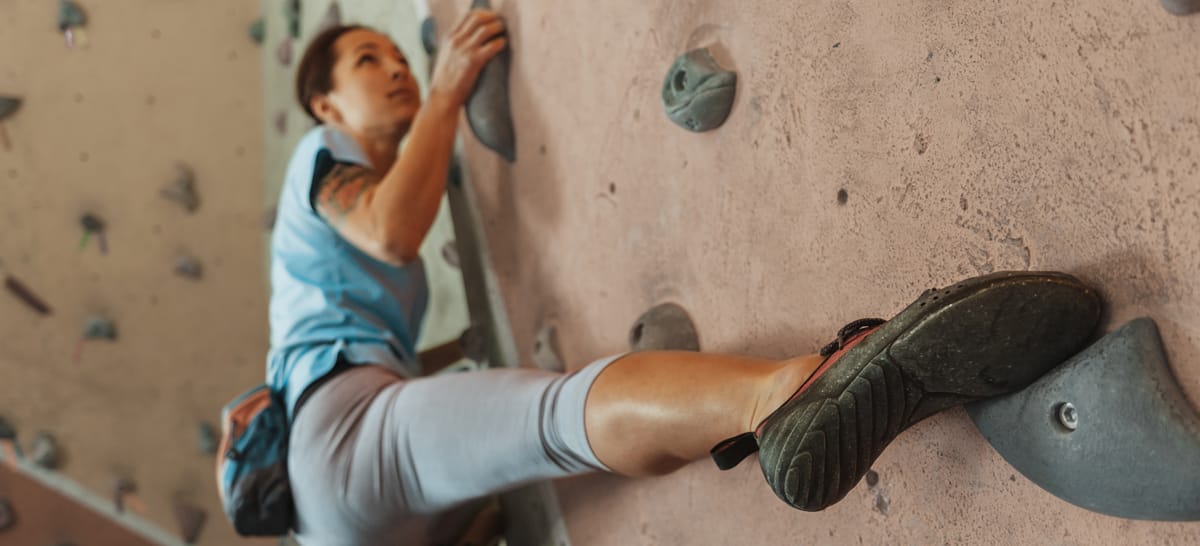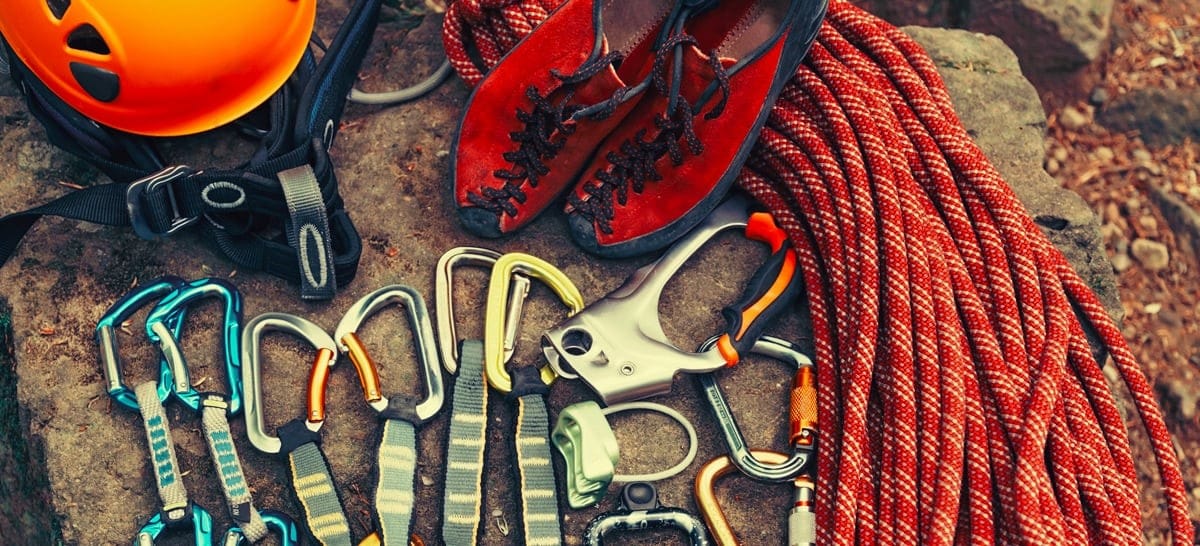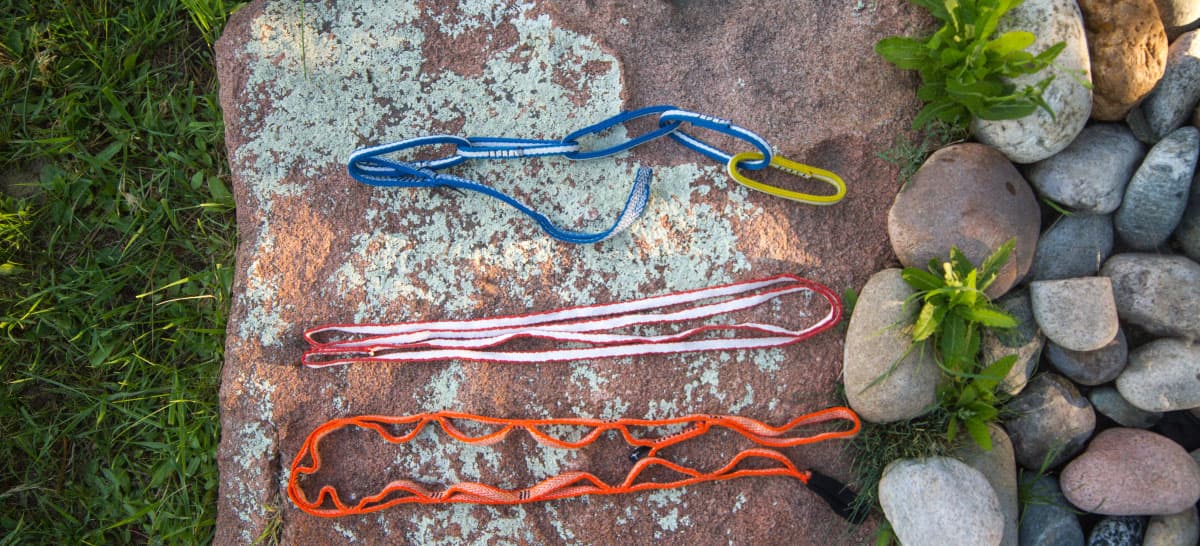When you boulder, you don't go as high as you would on a sport climbing route. The floor beneath a bouldering wall is soft enough for you to fall on, so to get down you simply climb back down, drop onto the cushioned floor or a mat, or do a combination of the two.
The great thing about bouldering is that it doesn't require any rope or technical gear know-how. In fact, the only piece of gear you really need is a pair of climbing shoes, and these are available to rent at many walls. Climbing chalk in a chalk bag also comes in handy to give you better grip, but you don't need this if you're just testing the waters.
While bouldering indoors isn't technical gear-wise, there are some basics you should familiarize yourself with to get the most out of your climbing experience. Take a look at these tips on how to boulder indoors.
Bouldering Difficulty Ratings
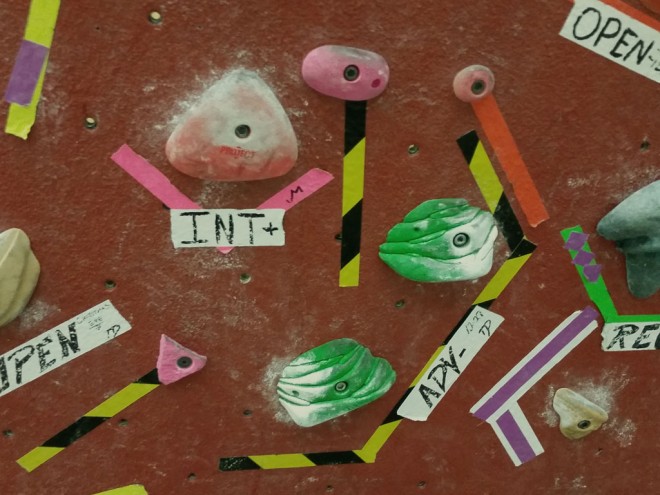
Bouldering walls have designated routes (referred to as problems) that climbers follow. These problems use the V-scale to rate how hard they are, however, indoor bouldering facilities often use a Rec-Open scale. How the V-scale relates to the Rec-Open scale may vary from gym to gym, but here's a basic breakdown of how to read bouldering difficulty levels:
Recreation (Rec): V0-V1 -- These problems are considered the easiest and are best for those who are new to bouldering.
Intermediate (Int): V2-V4 -- These problems are a little more challenging than Rec, but you can tackle them after some practice.
Advanced (Adv): V4-V6 -- Advanced problems are for boulderers who have more technical climbing skills. It's difficult to rely on strength alone to make it to the top of an advanced problem; you need to have good technique, as well.
Open: V6+ -- If you were competing in a bouldering competition, those using Open routes would be considered professionals. In other words, Open problems are for those who've spent a lot of time improving their strength and climbing techniques.
Sometimes problems have + or - symbols next to them. These just mean the route is in between levels. For example, Intermediate- is harder than Recreation but easier than a typical Intermediate problem. Intermediate+ is not quite as hard as Advanced but is considered more difficult than most Intermediate problems.
How to Follow a Bouldering Problem
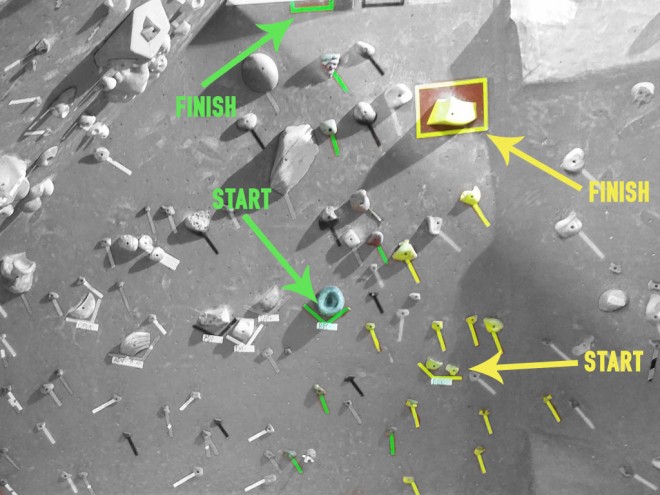
Bouldering problems follow a specific color hold or tick of tape depending on your climbing gym. If your gym uses tape, the tape may also have a specific pattern associated with it. Before you start to climb, make a point to find all of the holds that are part of your problem. This will prevent you from wasting energy trying to find where to go while you're on the wall. It's also good to make sure your problem doesn't cross the problems of other climbers who are already on the wall.
How to Start Bouldering
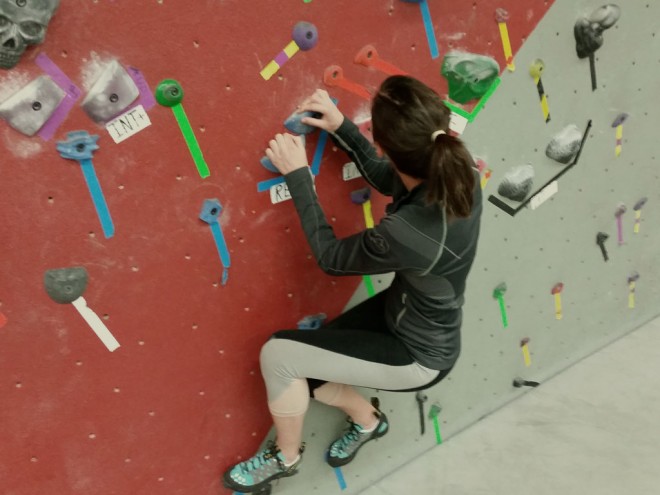
The start of a bouldering problem is usually marked by tape on the wall in a v-shape. Sometimes it is marked with a box around the starting hold. If one hold is marked with a v-shape or a box, start with both of your hands on that hold. If two holds are marked with the same color v-shape or box, use one hand on each hold. You should start with your feet on holds that are part of the same color scheme as the rest of your problem.
How to End a Bouldering Problem
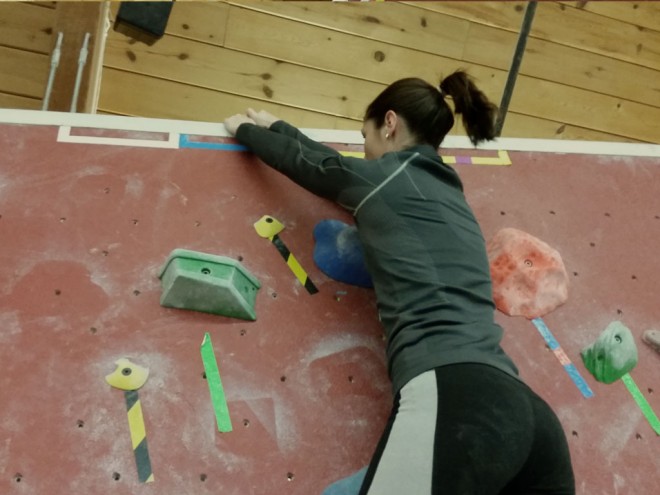
The end of a bouldering problem is marked by tape around the hold -- either in a box shape, a half box or a v-shape. Often problems end at the top of the wall, so rather than a specific hold, you are grabbing the part of the wall marked by the tape.
When bouldering for fun it doesn't matter if you finish with one hand or two, but if you ever enter a bouldering competition, you will need to end your climb with two hands in order for it to count.
When you've completed your climb (nice work!) use any color hold to make your way back to the bottom. You can simply drop from the top if you feel you have enough padding below you.
That's it! Now you're ready to try bouldering at your indoor climbing wall. Any type of climbing is a great workout for your body and your mind, so I'd highly recommend it. Have fun out there!
Already in love with climbing? Read how climbing indoors will make you a better climber.
Do you climb or boulder indoors? What advice would you give to beginners?
